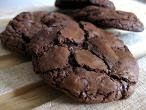The first two are fairly self-explanatory. The third marks the Jews’ escape from a terrible fate at the hands of the Persian King Ahasuerus, who had been inveigled into signing a decree that would kill them all by his evil Vizier, Haman. I pause to note that Vizier is a very good word, and somehow suggestive of evil plotting in its own right. Do we still have viziers nowadays or do they remain in legend only, I wonder? Luckily, in this case, the king’s brave and beautiful queen Esther (who was, unbeknownst to her husband, a Jew herself) and her uncle Mordecai managed to foil the plot, and Haman himself was the one who was hanged on the gallows he had built for his enemies. I think we should probably focus on the survival of the Jews part rather than the horrible retribution part, personally, as it makes me uncomfortable.
Like so many Jewish festivals, Purim celebrations brought fun and food. The story is read out in Hebrew from the Book of Esther in synagogue, and whenever Haman’s name is mentioned everyone makes as much noise as they can by stamping their feet, waving rattles, and shaking bean-filled yogurt pots lovingly made at their Hebrew Sunday school (though no doubt it’s all more high-tech than that nowadays). The children dress up and get given sweets, and it’s traditional to give food as gifts to friends, and to charity. My only clear memory of a costume I wore as a child was a hanky fairy dress, which Munchkin Granny made for me out of a lot of handkerchiefs my grandfather had had left over from some sales venture. It consisted of one handkerchief for the front and one for the back sewn together at the shoulders (I was a skinny little thing), and then lots more hankys sewn by one corner round the bodice edge. I loved it, and was the only girl not dressed up as Queen Esther with a tall pointy hat with a veil strung from the back that year. Munchkin Granny herself was made amazing costumes as a child by Israel Granny, although she remembers the year she was a wire and crepe paper lily with some trauma, as it completely prevented her from sitting down or going to the toilet. Her brothers were variously match boxes, bumble bees and chefs, which testify to some extraordinary degree of ingenuity on the part of
The recipe, when I dug it out, turned out to have a biscuity base, a figgy filling, and a cream cheese topping. All were easy to do, and all tasted very nice on their own out of the bowl. The filling wasn’t too hard to spread over the base, although the cream cheese topping was quite scanty. I halved the recipe as I didn’t have much cream cheese, and after much dithering, baked it in an 8’’ brownie tin. This made quite thin hamentaschen, but you could still taste all three layers, and probably make me more likely to eat them. Actually I would eat them however thick they were, as they were really tasty, rich with the dried fruit, and smooth on top from the cream cheese. They aren’t exactly authentic since they don’t have a pastry case, but I think they pass muster on a Purim themed treat. The Scientist liked them too, and snaffled two with his cup of tea. I don’t quite like to inflict my low-fat baking preferences on other people (although I’m sure they couldn’t have guessed with these little gems, so probably I just kidded myself that was why I had to keep them all), so I made some other things to give away.
We went visiting family yesterday, so for The Scientist’s parents I made some Easter biscuits (gaily mixing my cultural heritage – Easter is just a cultural festival as far as I’m concerned), and for Granny T and Munchkin Granny, the pecan and sour cream biscuits that the Tuesdays with Dorie blog group made a few weeks ago.
I assumed from the photos some of them had posted that I was making what we would call shortbread, although I was somewhat surprised at the amount of baking powder that went in. I tasted a bit of one when they came out of the oven, and it was delicious. They definitely weren’t shortbread-like though, but what we would call a scone. I am always unsure of what Americans mean by biscuits, despite endless discussions with Eco Bro about it, so this is one step closer to elucidation (I have another step in the pipeline thanks to Eco Bro’s recent trip to
1 1/3 cups plain flour
3/4 cups packed brown sugar
6 tablespoons chilled butter, cut into small pieces
Cooking spray
2 cups dried figs, stems removed
1 cup water
1/2 cup granulated sugar, divided
3 tablespoons fresh lemon juice
3/4 cup (6 ounces) 1/3-less-fat cream cheese, softened
1 teaspoon vanilla extract
1 large egg
2 teaspoons powdered sugar
Preparation
Preheat oven to 350°.
Lightly spoon flour into a dry measuring cup; level with a knife. Combine flour, brown sugar, and salt, stirring well with a whisk. Cut in butter with a pastry blender or 2 knives until mixture resembles coarse meal. Press mixture firmly into a 13 x 9-inch baking dish coated with cooking spray.
Combine figs, water, and 1/4 cup granulated sugar in a medium saucepan; bring to a boil over medium-high heat. Cook 5 minutes or until figs are tender and sugar dissolves. Cool slightly. Place fig mixture and juice in a blender; process until smooth. Gently spread fig mixture over prepared crust.
Place remaining 1/4 cup granulated sugar, cheese, vanilla, and egg in a medium bowl; beat with a mixer at medium speed until smooth. Pour over fig mixture; spread to edges. Bake at 350° for 30 minutes or until set and lightly browned. Cool in pan on a wire rack; sprinkle with powdered sugar.
30 servings (serving size: 1 bar)





3 comments:
I've received a bit of a history lesson from your post and am the better for it!
I'm jealous of your handkerchief dress, as I wore a version of one when I got married - though I would have loved a real one.
Here is my explanation of an American biscuit vs American scone;
A biscuit is made from flour, butter, milk, tad of sugar, baking powder/soda and salt. It is plain (no flavoring), very light and flakey (kind of like puff pastry). Typically served with jam, butter or honey. Biscuits can also be served with savory toppings, particularly in the Souther States where they are served smothered in pork or chicken gravy (yuck!).
A scone is a dryer version of a biscuit with embellishments such as dried or fresh fruits, nuts, seeds and flavorings (almond, cinnamon, cardamom, etc). A scone can also be drizzled with a sugar icing and is served alone, no butter or jam required.
The Pecan and Sour Cream "biscuit" is a scone as far as I'm concerned.
Your Easter cookies are adorable, so much work went in to them. I bet they tasted even better then they looked.
Hope your Easter weekend was lovely!
Hi, I came over from Holler's soup party - love all your remembrances of past purim's and information about the festival - all quite unknown to me but sounds v interesting!
I also have had the experience of making a northern american recipe for biscuits and realising that they are what we in Australia also call scones - actually posted about the differences in terminology and found a lot of sympathy from other bloggers! It is at http://gggiraffe.blogspot.com/2008/01/you-say-biscuits-i-say-scones.html if you want to check it out!
Lisa and Johanna - thanks for your thoughts on biscuits and scones. I'm glad I'm not the only one who's confused! I'm going straight over to look at your discussion, Johanna, and I think I'm just going to have to make each of them in turn to get this sorted once and for all!
I love the idea of a wedding hanky dress - it sounds like a grown-up version of my costume!
Post a Comment